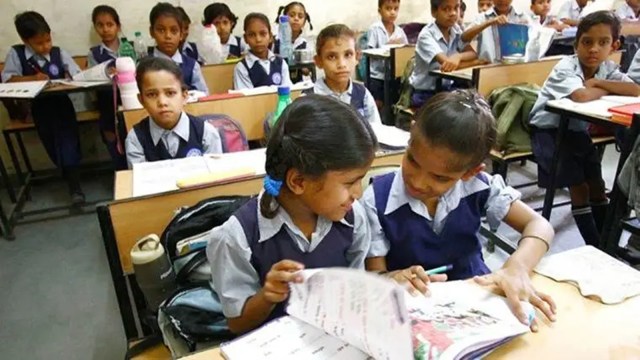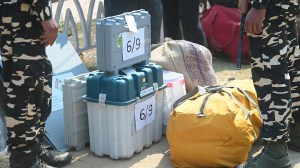ASER 2024: Percentage of 15 & 16-year-old boys in rural Gujarat not enrolled in school doubles since 2022
The ASER Rural India report also found that private school enrolment (age 6-14 years) has returned to pre-COVID levels in Gujarat.
 The percentage of those not enrolled fell in Gujarat between 2018 and 2022, but increased in 2024. (Express Archives)
The percentage of those not enrolled fell in Gujarat between 2018 and 2022, but increased in 2024. (Express Archives)The percentage of boys aged 15-16 years old who are not enrolled in school has more than doubled in the last two years, as revealed by the Annual Status of Education Report (ASER) 2024 Gujarat Rural report released Tuesday. However, this increase is less among girls of the same age group.
The percentage of those not enrolled fell in Gujarat between 2018 and 2022, but increased in 2024. Almost 10 percent of boys and girls in this age group in the state are out of school.
In 2024, like in many other states, private school enrolment (age 6-14 years) has returned to pre-COVID levels in Gujarat. In 2018, enrolment in private schools was 12.4 per cent which declined to 8 per cent in 2022 and returned to 12.4 per cent in 2024.
Between 2022 and 2024, the percentage of 15-16-year-old boys not enrolled in schools has doubled from 4.2 per cent to 9.4 per cent. For girls, it went from 8 per cent to 10.5 per cent. In 2016, 18.7 of per cent boys and 23.5 per cent of girls were not enrolled in any school in the state. Notably, this includes both children who have never been enrolled and those who have dropped out.
The ASER Rural India report has been released after two years, after the last was published in 2022. Barring the newly formed districts, the remaining 26 districts in Gujarat were sampled using the Census 2011 frame across 780 villages, surveying 24,746 children in the age group of 3-16 years in the state. While 15,332 households in these 26 districts were covered, 648 government schools in these 780 villages were surveyed for the school infrastructure report.
The sampling selection process included 30 villages randomly selected in each district and 20 households randomly selected in each village.
From 2010 to 2024, the number of schools with an enrolment of 60 or less increased from 4.6 per cent to 14.4 per cent. In 2010, 623 schools were visited and in 2024, 648 schools were visited.
Also, in 2022, 17.2 per cent of children who are 3 years old were not in pre-school or school and, 8.1 per cent 4-year-old children were not in school. This has declined to 4.7 per cent in the 3-year age group and 3.8 per cent in 4-year-olds.
Reading and arithmetic levels
In rural Gujarat, there has been an increase of 10.7 per cent between 2022 and 2024 in reading levels of Class V children enrolled in government schools. On the other hand, math numbers have not changed much.
Pointing at recovery from the “learning loss” witnessed after the COVID pandemic among Class V children in government schools, in reading, 2024 figures are higher than in 2022.
Only 14.3 per cent of Class V students can solve Class II 3-digit by 1-digit division problems, while 46.3 per cent of the students can read at a Class II level.
Further, among Class VIII students, reading levels have increased since 2022, surpassing the pre-COVID levels — from 52.4 to 75.8 per cent. Arithmetic levels declined from 31.8 to 30.3 per cent.
Digital literacy
Despite Gujarat having a higher percentage of adolescents aged between 14-16 years with access to smartphones than the national level — 96 per cent against 89 per cent — it has a far less percentage of ownership. Against 31.4 per cent of adolescents across the country with ownership of smartphones, only 18.6 per cent of them in Gujarat have their own phones.
In rural Gujarat, 12.9 per cent girls aged 14-16 years old have their own smartphones against 24.6 per cent boys.
School infrastructure
Over half of Class I children — 59.8 per cent — were seen sitting with other classes, while 55.3 per cent of Class II children were also observed sitting with other classes in the classroom.
Libraries were not there at 16.4 per cent schools, and 28.2 percent of them had a library that children aren’t using. Meanwhile, 25.4 per cent schools lacked computers while 34.6 percent schools had them without children being able to access them.







